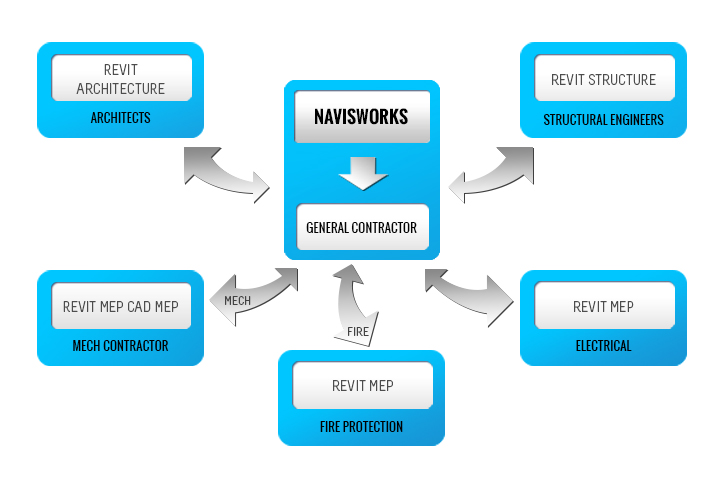BIM/VDC

BIM-Architecture-Structure-MEPF
We have established BIM expertise and protocols including standards and a portfolio of completed projects from concept design stage to full construction documentation. Based on our expertise level we provide BIM services for all disciplines-Architectural, Structural, Mechanical, Electrical, Plumbing and Fire Protection. Our key strength is our customer-centric approach, allowing us to develop long-term business relationships with our clients.
Our team consists of architects, engineers, and other highly skilled professionals who can design BIMs from scratch or convert 2D drawings into 3D model that saves time and money by virtually assembling a building before construction actually begins. Based on the BIM output, we can create simple models that generate Clash Detection reports, further more complex models can produce Quantity Take-Offs, Shop Drawings, or 4D Facility Management.
CLASH DETECTION
We find a lot of errors now by using BIM platforms; in fact, in some of the platforms, it's actually possible to automate what we call 'clash detection,' where we're looking for ductwork that hits beams, pipes that hit ductwork, etc. Using BIM, clashes and conflicts can be resolved in the documents stage instead of on‐site during construction. When you design and build virtually, then you have a higher chance of eliminating planning and design errors or inefficiencies that lead to construction problems, delay the project, cause the project to be over budget, or impact long‐term facility operations. Conflict detection reduces the number of requests for information (RFIs) and change orders, saving both time and money. As architects are starting to adopt BIM, the trade contractors are following. They're realizing that they may have to invest a lot more time and money upfront to create a more intelligent drawing through a 3‐D model, but it's going to save them a lot of time in the field with rework and rerouting.
4D CAPABILITIES
4‐D capabilities make scheduling easier with BIM. A 3‐D building information model provides excellent visualization of a space. When that model illustrates the phases of construction over time, it becomes 4‐D (3‐D plus time). 4‐D schedules are a powerful tool for phasing, coordinating, and communicating planned work to a variety of audiences, including project stakeholders and those directly responsible for executing the work. Materials can be calculated automatically, ordered electronically, and delivered to the site in larger preassembled pieces just when they're needed. There are huge advantages to that because you don't have as much raw material on the site. Because these raw materials are sometimes moved as many as seven times over the course of a construction project, just‐in‐time (JIT) delivery increases the efficiency of workers. Using the building information model for specifications, steel and MEP systems can be prefabricated off‐site. We can actually have [structural elements] produced off‐site now, at a lower cost and in a more friendly environment, and then have them shipped to the site and erected in a very precise, quicker period of time. Simply put, BIM helps perfect project phasing. It provides the ability to optimize procedures that are used to build, so you can place cranes in the right position, use your manpower most effectively, and deliver materials on time.




